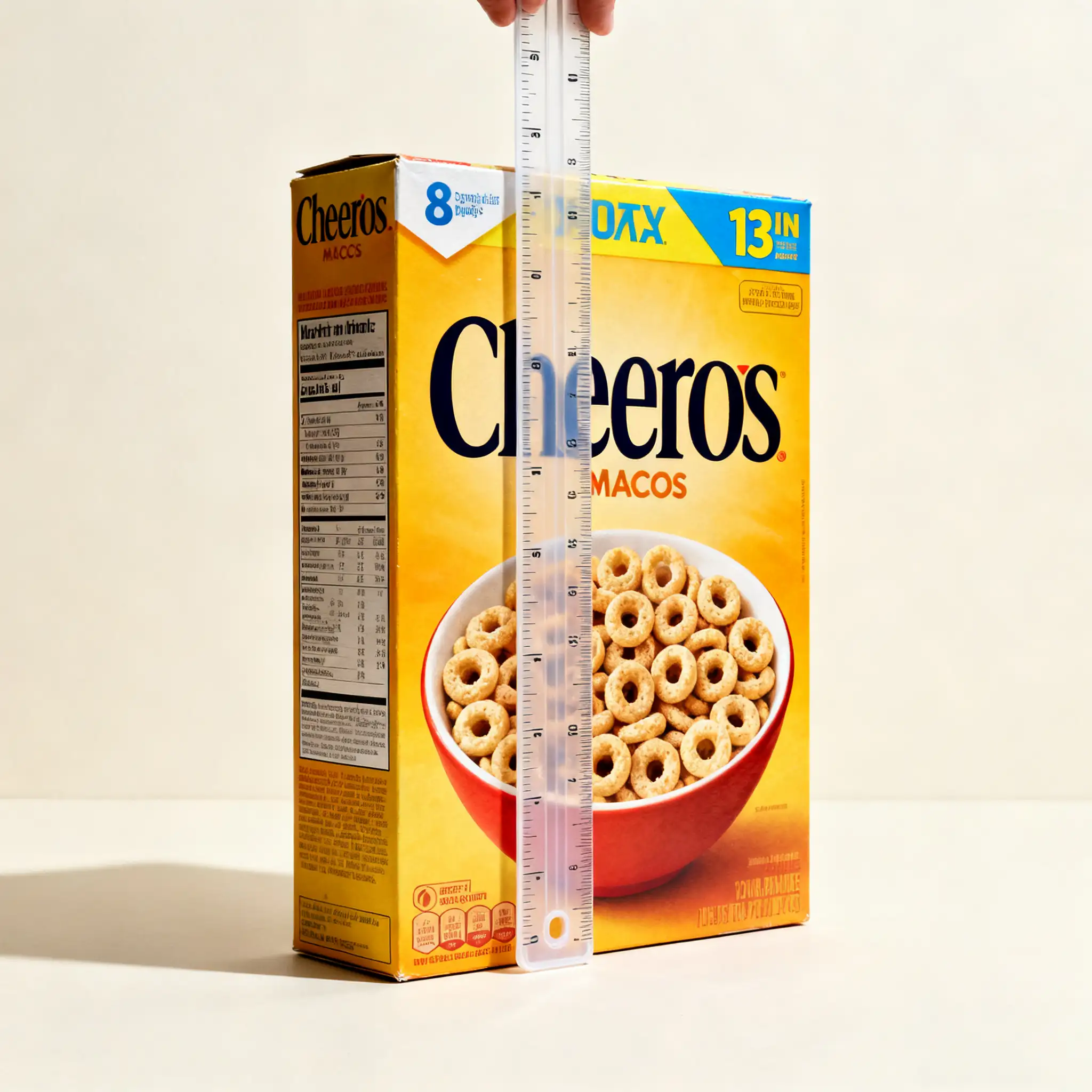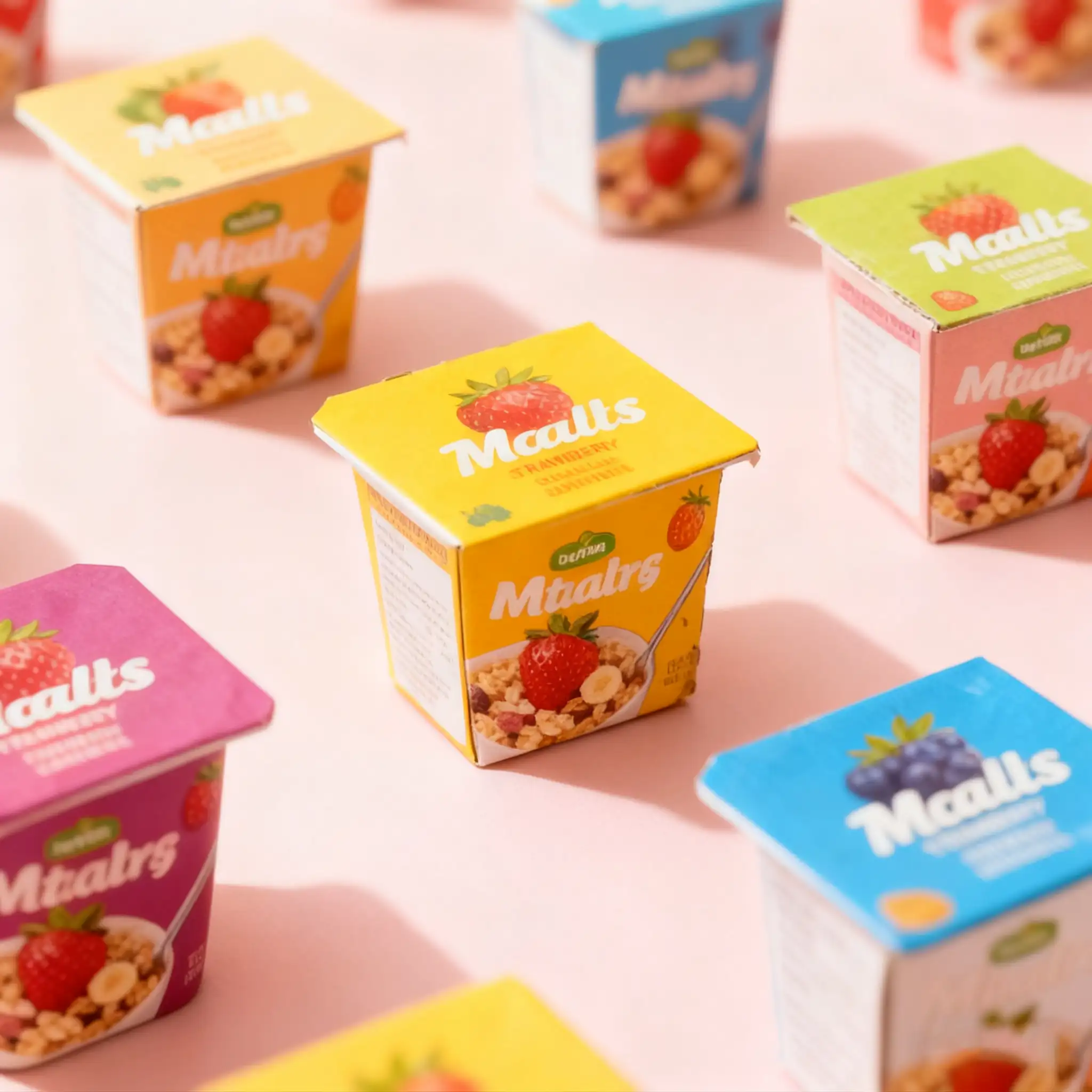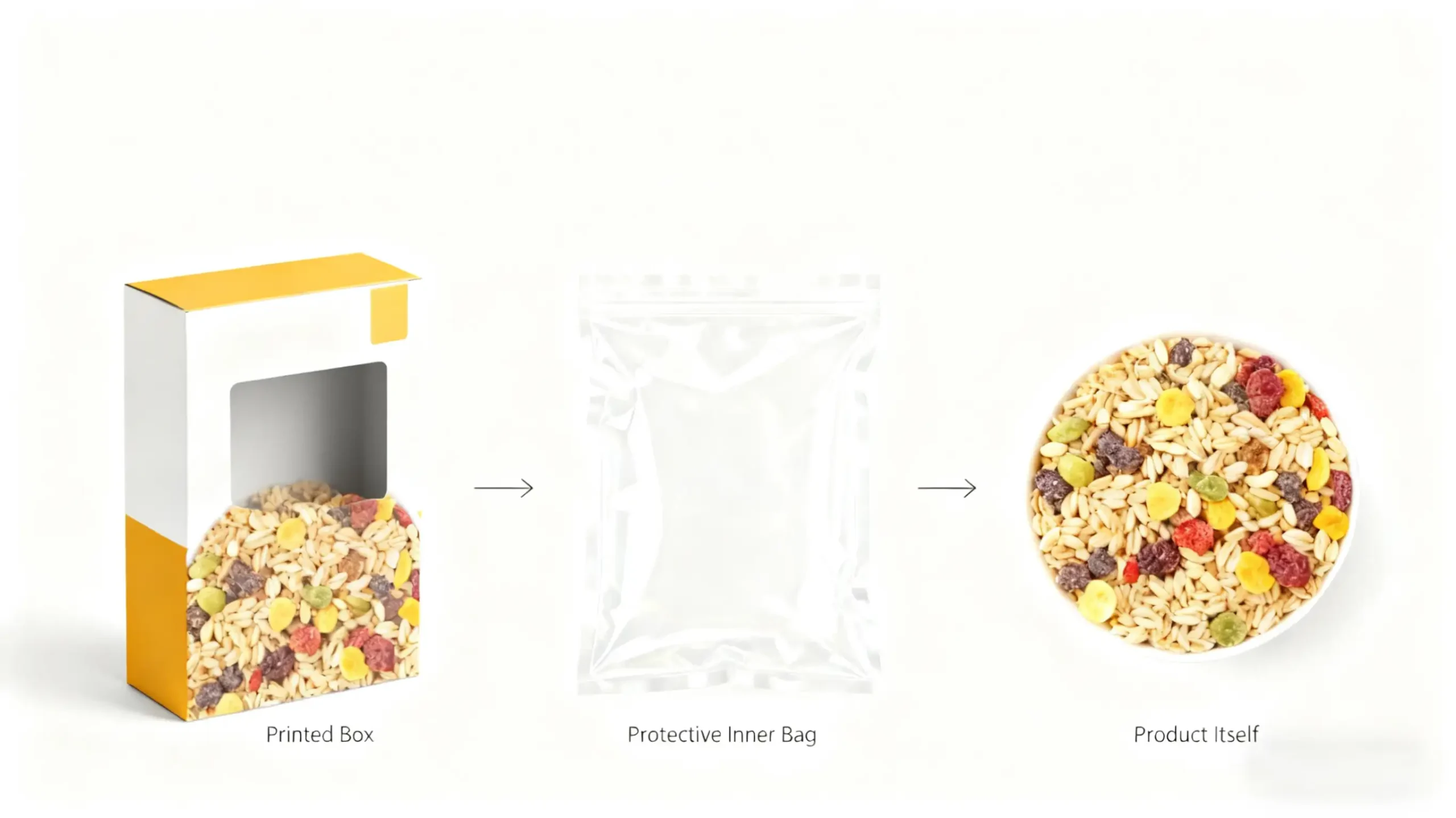Walk down any grocery store aisle, and you're greeted by a colorful, towering wall of cereal boxes. They're a staple in almost every kitchen pantry. But have you ever stopped to wonder, what are the actual dimensions of a cereal box? Is there a "standard" size? And why are they so tall and thin?
It seems like a simple question, but the answer is surprisingly complex. The size and shape of a cereal box are the results of decades of research into marketing, shipping logistics, shelf appeal, and consumer psychology.
In this ultimate guide, we'll unpack everything you need to know about cereal box dimensions. We'll cover the standard sizes, explain the science behind their design, and even show you how to measure one yourself.
*(Image: A colorful grocery store aisle showing the variety of cereal box shapes and sizes.)* *(Image: A colorful grocery store aisle showing the variety of cereal box shapes and sizes.)*](http://gifts-pack.com/wp-content/uploads/2025/11/A-colorful-grocery-store-aisle-filled-with-various-cereal-boxes-scaled.webp)
The Quick Answer: Average Cereal Box Dimensions
For those in a hurry, here are the typical dimensions for a standard, family-size cereal box in the United States:
- Height: 12 to 14 inches (30 to 35 cm)
- Width: 7.5 to 8.5 inches (19 to 21.5 cm)
- Depth: 2 to 2.75 inches (5 to 7 cm)
However, this is just a general average. Cereal boxes come in a wide range of sizes, from tiny single-serving packs to massive bulk bags. Let's break them down.
A Deep Dive into Cereal Box Sizes
Cereal manufacturers don't use a one-size-fits-all approach. They strategically design different sizes to cater to various customer needs, family sizes, and price points.
1. Standard / Family Size Box
This is the most common size you'll find. It's designed to fit comfortably in a pantry, last a family a reasonable amount of time, and offer a good balance between price and quantity.
- Average Dimensions:
- Height: 12 - 14 inches
- Width: 8 inches
- Depth: 2.5 inches
- Typical Weight: 10 oz to 18 oz (280g to 510g)
- Examples: A standard box of Cheerios, Frosted Flakes, or Rice Krispies.

2. Large / Value Size Box
Aimed at larger families or budget-conscious shoppers, these boxes offer more cereal per ounce, making them a more economical choice. Their dimensions are pushed to the limit of what can fit on a standard grocery shelf.
- Average Dimensions:
- Height: 13 - 15 inches
- Width: 9 - 10 inches
- Depth: 2.75 - 3.5 inches
- Typical Weight: 18 oz to 24 oz (510g to 680g)
- Examples: "Mega Size" or "Family Size" versions of popular brands.
3. Individual / Single-Serving Box
These tiny boxes are perfect for travel, portion control, or variety packs. Their design prioritizes convenience over volume.
- Average Dimensions:
- Height: 4 - 5 inches
- Width: 3 - 4 inches
- Depth: 1.5 inches
- Typical Weight: 1 oz to 2.5 oz (28g to 70g)
- Examples: The small boxes found in hotel breakfast bars or variety 8-packs.

Comparison Table of Cereal Box Sizes
| Box Type | Avg. Height (in) | Avg. Width (in) | Avg. Depth (in) | Typical Weight (oz) |
|---|---|---|---|---|
| Individual | 4 - 5" | 3 - 4" | 1.5" | 1 - 2.5 oz |
| Standard | 12 - 14" | 7.5 - 8.5" | 2 - 2.75" | 10 - 18 oz |
| Large/Value | 13 - 15" | 9 - 10" | 2.75 - 3.5" | 18 - 24 oz |
The "Why": The Science and Strategy Behind the Shape
Why are cereal boxes predominantly tall and slender? It’s not an accident. This specific shape, often called a "flank," is a masterclass in packaging engineering and marketing.
1. The Battle for Shelf Space
In a crowded supermarket, visibility is everything. A taller box has a larger front-facing surface area, making it a bigger billboard for branding, logos, and cartoon mascots. This strategy, known as maximizing "facing," helps a product stand out from its competitors. The goal is to catch your eye as you walk down the aisle.
2. The Psychology of Perception
Our brains are wired with certain biases. The "vertical-horizontal illusion" makes us perceive tall, narrow objects as being larger or containing more volume than shorter, wider ones of the same volume. A tall, skinny cereal box feels like it has more cereal in it, even if it's just an illusion. This gives the consumer a feeling of getting more value for their money.
3. Logistics and Shipping Efficiency
The dimensions are also optimized for shipping. Boxes must be designed to fit perfectly onto standard shipping pallets (typically 48" x 40") with minimal wasted space. This efficiency reduces shipping costs, which is a major factor for manufacturers. The uniform depth of most boxes allows them to be packed tightly in cases and on trucks. This level of optimization is a key part of creating custom packaging solutions that are both effective and economical.
4. The Pantry and Kitchen Fit
Manufacturers know their boxes need to fit into your home. The dimensions are carefully considered to ensure a standard box can slide easily into most kitchen cabinets and pantry shelves without being too wide or clumsy.
Anatomy of a Cereal Box: More Than Just Cardboard
A cereal box is a carefully engineered product. The materials and construction are just as important as the dimensions.
-
The Box Material: Most cereal boxes are made from recycled paperboard, specifically clay-coated news back (CCNB). This material is cost-effective, lightweight, and provides a smooth surface for printing. For brands looking for a premium feel or specific food-safe properties, designers often use high-quality paperboard that can be customized for strength and finish.
-
The Printing and Design: This is where the magic happens. Brands use vibrant, high-gloss printing with special finishes to attract customers. The design, colors, and typography are all tested extensively. Creating effective custom food packaging involves a deep understanding of how these visual elements influence purchasing decisions.
-
The Inner Bag: The plastic bag inside the box is crucial. It's typically made of High-Density Polyethylene (HDPE) and serves two main purposes:
- Freshness: It acts as a moisture and air barrier, keeping the cereal from going stale.
- Protection: It prevents the cereal from breaking during shipping and handling.

How to Measure a Cereal Box Yourself
Want to do your own research? It's easy! Grab your favorite box of cereal and a tape measure or ruler. Here’s how to measure it like a pro.
Step 1: Measure the Height
Stand the box upright on a flat surface. Measure from the bottom edge to the top edge. This is the height.
Step 2: Measure the Width
With the box facing you, measure from the left edge to the right edge. This is the width, also known as the "front panel."
Step 3: Measure the Depth
Turn the box to its side. Measure the distance from the front panel to the back panel. This is the depth, or the "side panel."
You've now got the three key dimensions: Height x Width x Depth.
The Future of Cereal Packaging
The world of packaging is always evolving, and cereal boxes are no exception. Here are a few trends to watch:
- Sustainability: Consumers are demanding more environmentally friendly packaging. Brands are responding by using more recycled materials, vegetable-based inks, and exploring designs that use less paperboard. Many companies are now seeking out eco-friendly packaging options to reduce their carbon footprint.
- Resealable Features: While the inner bag is effective, some brands are experimenting with resealable box tops or integrated zip-lock-style bags to improve convenience and freshness.
- Flexible Packaging: Some brands, particularly in the organic or granola space, have ditched the box entirely in favor of resealable stand-up pouches. These use less material and often stand out on the shelf.
Conclusion: A Perfectly Engineered Package
So, what are the dimensions of a cereal box? As we've seen, there is no single answer. The dimensions are a finely tuned balance of marketing brilliance, logistical necessity, and user-centric design.
The average family-size box stands around 12 to 14 inches tall, but this simple number hides a complex story. From the "billboard" effect on the grocery shelf to the perfect fit on a shipping pallet, every millimeter is deliberate.
The humble cereal box is a testament to the power of great packaging design. It shows how a simple container can become an iconic part of our daily lives.
Are you inspired to create packaging that stands out? Whether you're launching a new food product or redesigning an existing one, the right packaging is key. Explore custom box designs and solutions to see how you can build your own iconic brand.






